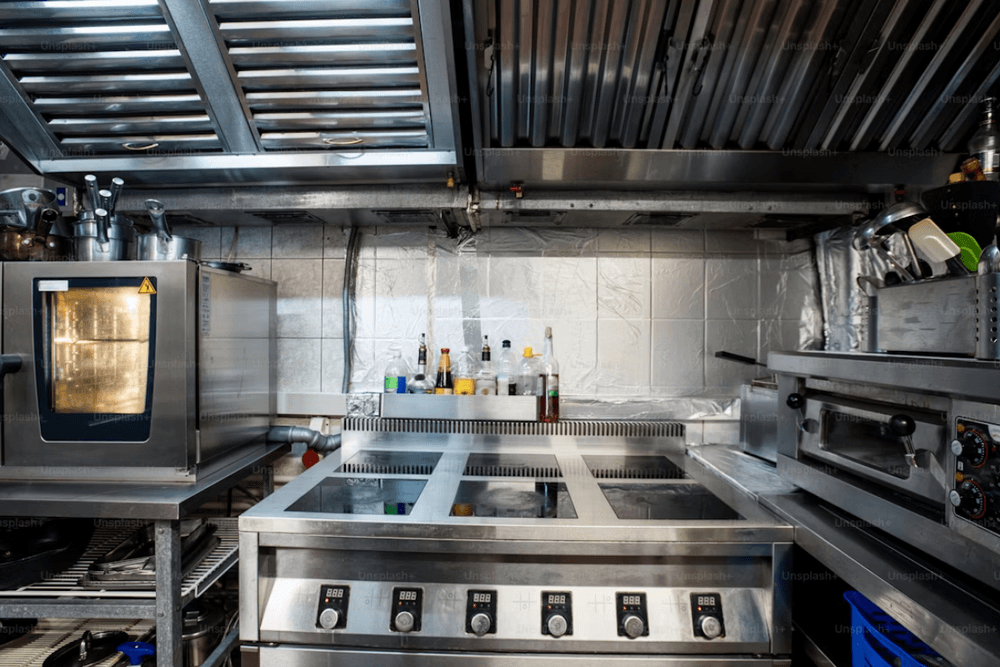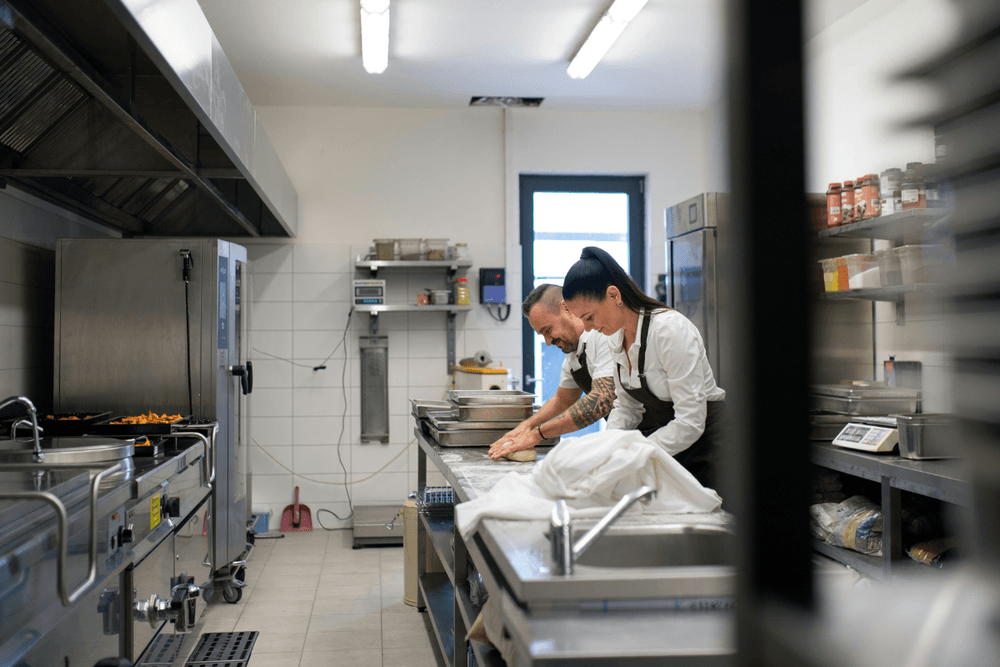How Much Does It Cost to Start a CPU Today
Table of Contents
CloudKitchens
How many tacos can be delivered from a 1000sqft restaurant?
The same amount as a 200sqft ghost kitchen.
Get a clear breakdown of the main expenses to launch your central production unit and plan your investment with confidence.
Launching a Central Production Unit (CPU) is a strategic step for food businesses looking to expand, reduce operational costs, and increase logistics efficiency. But building this type of infrastructure requires careful planning and financial insight to ensure long-term success.
A CPU allows your business to consolidate production in a single location, offering more control over quality, consistency, and distribution. This centralized approach makes scaling more agile and efficient. Understanding the kitchen startup costs involved is essential to assess the feasibility of the model and estimate its food facility ROI.
In this guide, you will discover the main factors that affect CPU startup costs, the types of food businesses that benefit most from this structure, and how to calculate ROI based on the specific needs of your operation.
Read more: Ghost Kitchen vs. Traditional Restaurant: Which One Is Right for You?
The Core Costs of Starting a CPU
Starting a Central Production Unit involves a significant upfront investment, beginning with leasing or purchasing a suitable space. Renovations and upgrades are often necessary to ensure the facility complies with local food safety and health regulations, in addition to your business needs.
Here are the key cost categories you need to plan for:
Initial investment: includes leasing or buying the facility and making any modifications required to meet sanitary and production standards. This often overlaps with general commercial kitchen costs across the industry.
Equipment: refers to industrial kitchen appliances and tools that support high-volume, standardized food production.
Licensing and regulatory compliance: covers fees and procedures to obtain permits from health departments, environmental agencies, and local governments.
Staffing: includes hiring and training qualified employees to operate the CPU efficiently and maintain consistent production during business growth. Labor is a key variable when estimating your overall kitchen budget.
Ghost Kitchens vs Traditional Kitchen Build-Out
Choosing between a traditional kitchen and a ghost kitchen for a CPU requires careful analysis of the associated costs. From initial investment to operational expenses, each model has distinct financial implications that directly impact profit margins and return on investment (ROI).
Below is a straightforward comparison of the main costs associated with each format.
Traditional Kitchen
Opening a traditional kitchen, such as a dine-in restaurant, demands a significant investment in architecture and design, construction, decoration, and equipment. Depending on size and location, total costs can reach up to US$ 1 million.
Prime Location Cost: Properties in high-traffic areas typically have high rents. This fixed expense impacts monthly cash flow and raises the break-even point.
Expanded Payroll: Beyond kitchen staff, traditional kitchens require waiters, hosts, managers, and assistants, significantly increasing payroll and labor costs.
Utilities and Maintenance: Constant expenses include electricity, water, climate control, and dining area upkeep. Additional costs cover furniture, decor, and customer comfort.
Low Flexibility in Crises: High fixed costs leave little room for adjustment during periods of low demand, potentially compromising financial health.
Ghost Kitchen
A ghost kitchen can be launched with an initial investment of thousands of dollars, instead of hundreds of thousands, as is the case with CloudKitchens units. Its ready-to-use infrastructure reduces the time and capital required to get started.
Lower Licensing Costs: Since the focus is solely on production and does not require square footage to accompany dine-in guests, spaces are smaller and located in industrial or logistical areas, significantly lowering licensing expenses.
Reduced Staff Without On-site Service: Without dining areas or on-site customer service, fewer employees are needed. The team is focused on kitchen operations, reducing labor costs.
More Efficient Operation: Main expenses include ingredients, packaging, electricity, and delivery platform fees. Without front-of-house costs, the business remains financially leaner.
Shared Kitchen Flexibility: Models like CloudKitchens offer ready kitchens and shared services, enabling economies of scale and further reducing operational costs.
Estimating ROI on a CPU Investment
To evaluate whether a CPU is worth the investment, you need to estimate your return based on operational margins, break-even points, and projected revenue growth. This helps determine how long it will take for your business to turn a profit.
In traditional kitchens formats, ROI can take up to five years due to high fixed costs and long build times. In contrast, businesses using ghost kitchen infrastructure often recover costs faster thanks to ready-to-use setups and lower overhead.
Delivery-first kitchens, like ghost kitchens, are also more adaptable. They allow you to respond quickly to changes in demand, adjust menus, expand into new regions, and test sales channels without heavy capital risks.
To build a realistic projection, consider:
- Average monthly production volume
- Cost per unit produced and price per unit that can be reasonably charged
- Scalability with current resources
- Estimated time to reach full capacity
With the right setup and a solid financial plan, a CPU shifts from being a cost center to becoming a scalable, high-efficiency engine for food production.
What Type of Food Business Needs a CPU
Several types of food businesses can gain substantial benefits from a Central Production Unit. Below are common cases and practical examples of how different operations use CPU kitchens to scale efficiently and flexibly.
Food Manufacturing
If your business produces a specific item such as juices, soups, or energy bars, a CPU allows you to operate like a true food factory with lower initial investment. You can install your own equipment, package on-site, and fulfill wholesale or B2B orders with full infrastructure.
Hospital Catering
Hospitals require strict food safety and dietary compliance. CPUs offer clean, private units with well-maintained equipment, supporting precise labeling, nutrition management, and quick delivery from strategic locations.
School Meal Preparation
School meal providers benefit from ready-to-use kitchen access and strategic locations, especially when servicing multiple districts. These kitchens offer cold storage, long-term leases, and convenient loading access to meet daily delivery schedules.
Bakery Kitchens
Baking entrepreneurs use CPUs to launch early without the expense of a full retail storefront. You can sell to cafes, run online bakery brands, or distribute wholesale, all while using commercial-grade infrastructure.
Airline Catering
Serving airlines requires high-volume, HACCP-compliant food production with tight delivery windows. CPUs meet these needs with cold chain storage and secure facilities located near transport hubs, eliminating the need for lengthy renovations.
Industrial Kitchen Operations
Businesses that process hundreds or thousands of orders daily require robust infrastructure. CPU kitchens frequently offer 24/7 access, cold storage, and high-efficiency layouts that maximize logistics, speed, and scale.
Military Catering
Food contractors serving the military need flexibility to adjust production based on contract demands. CPUs provide on-demand space, 24/7 access, security, and infrastructure that delivers high output without tying up fixed capital.
Direct-to-Consumer Meal Preparation
D2C meal brands find CPUs ideal for small-scale launch and scalable growth. These kitchens allow around-the-clock production and packaging, making it easier to grow subscriptions without traditional brick-and-mortar constraints. They’re also a smart choice for brands comparing commissary kitchen cost models.
Test Kitchens
Chefs and food teams use CPU kitchens for R&D, staff training, and product testing. Flexible access and low overhead make them perfect for trial runs, tastings, and concept validation before investing in permanent expansion.
Factors That Influence CPU Startup Costs
Several factors impact the total cost of starting a Central Production Unit. Understanding them helps you build a realistic budget and avoid surprises.
City size: affects rent, labor, and supplier pricing. Large metropolitan areas typically involve higher costs but also offer greater market demand.
Production volume: influences the scale of infrastructure, equipment, and staffing needed. Higher output usually requires more capital for space and machinery.
Kitchen layout: determines workflow efficiency and renovation requirements. A smart layout improves operations and can lower construction expenses.
Cold storage needs: are critical for businesses handling large volumes of perishable items. Walk-in coolers, freezers, and other cold chain solutions significantly affect both startup and ongoing costs.
Read more: How to choose the best shared use kitchen for your business
Find a Cost-Effective CPU Kitchen With CloudKitchens
Scaling your operation requires a facility that keeps pace with your business. CloudKitchens offers production-ready kitchens with full infrastructure, strategic locations, and expert support to accelerate your growth.
Our spaces are ideal for businesses expanding central production, entering new markets, or serving multiple regions efficiently. You avoid high buildout costs and start operating faster.
Want to explore a kitchen near you or speak with a specialist? Browse CloudKitchens spaces and take the next step in growing your food business.
FAQ – Costs to Start a CPU
What are the main costs involved in starting a CPU?
They usually include facility rent, equipment purchases, renovations, licenses, regulatory fees, and initial operating costs such as inventory and labor.
Can I reduce the initial costs of a CPU?
Yes. Common strategies include buying quality second-hand equipment, renting instead of purchasing, starting with a smaller space, and expanding as demand grows.
DISCLAIMER: This information is provided for general informational purposes only and the content does not constitute an endorsement. CloudKitchens does not warrant the accuracy or completeness of any information, text, images/graphics, links, or other content contained within the blog content. We recommend that you consult with financial, legal, and business professionals for advice specific to your situation.
More insights & stories
There’s more where that came from.
Get in the know and check out our additional insights





